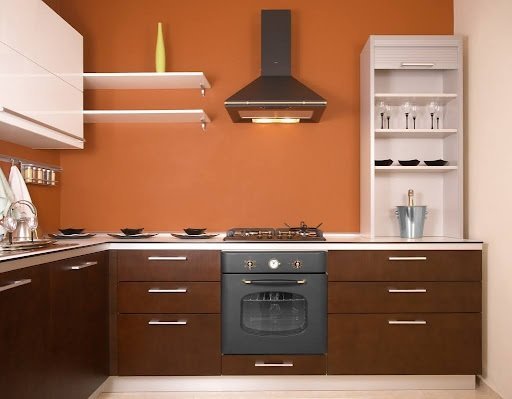“Discover premium quality cooking hoods in Singapore 🇸🇬 Enhance your kitchen experience with our sleek, functional designs 🍳✨
In the vibrant culinary landscape of Singapore, the cooking hood has emerged as an indispensable component in modern kitchens. As the city-state continues to blend its rich cultural heritage with contemporary innovations, the evolution of cooking hoods reflects both practical needs and aesthetic preferences. This article explores the development, significance, and impact of a premium cooking hood in Singapore, revealing how they have become more than just kitchen appliances—they are now integral to the culinary experience and home environment.
The Evolution of Cooking Hoods
Cooking hoods, or range hoods, have undergone significant transformations since their inception. Initially, these devices were simple exhaust fans designed to remove smoke, grease, and odors from the kitchen. In Singapore, the adoption of cooking hoods became more pronounced with the rise of high-rise apartments and compact living spaces, where effective ventilation became crucial for maintaining a comfortable and clean environment.
In the early days, cooking hoods in Singapore were primarily functional, focusing on basic ventilation and odor control. However, as Singapore’s culinary scene became more diverse and sophisticated, there was a growing demand for hoods that not only performed well but also complemented modern kitchen aesthetics. This shift led to the development of more advanced models featuring improved filtration systems, quieter operations, and sleek designs that align with contemporary kitchen trends.
Cultural Significance and Practical Benefits
Singapore’s multicultural society brings together a wide array of cooking styles, from traditional Malay, Chinese, and Indian cuisines to Western and fusion dishes. This culinary diversity necessitates highly effective cooking hoods to handle various cooking methods, such as frying, steaming, and grilling, which can produce a significant amount of smoke and grease.
Cooking hoods in Singapore are engineered to meet these diverse needs. Modern hoods are equipped with advanced filtration technologies, including carbon filters and high-efficiency particulate air (HEPA) filters, which capture fine particles and odors. This capability is particularly valuable in Singapore’s humid climate, where the combination of heat and moisture can exacerbate kitchen odors and grease buildup.
Beyond their practical benefits, cooking hoods also play a role in preserving the overall quality of living spaces. In high-rise apartments, where kitchens are often open-plan and integrated with living areas, effective ventilation helps to prevent the permeation of cooking smells into other parts of the home. This ensures that residents can enjoy a pleasant living environment free from the intrusion of persistent odors.
Innovative Features and Design Trends
The evolution of cooking hoods has seen a shift towards incorporating innovative features and stylish designs. In Singapore, where aesthetics are as important as functionality, manufacturers have embraced design trends that cater to modern tastes. Sleek, minimalist designs with stainless steel finishes and hidden controls are popular among homeowners who seek a seamless integration of appliances into their kitchen décor.
Touchscreen controls, LED lighting, and smart technology are now common features in high-end cooking hoods. These advancements allow for precise control over ventilation settings, improved energy efficiency, and enhanced user convenience. Some models even offer connectivity with smart home systems, enabling users to control their cooking hood remotely via smartphone apps.
Additionally, the trend towards quieter operation has become a significant consideration. Advanced motor technologies and improved insulation materials have led to the development of cooking hoods that operate with minimal noise, enhancing the overall cooking experience and contributing to a more serene kitchen environment.
Challenges and Future Directions
Despite their advancements, cooking hoods face several challenges. In Singapore, the compact nature of many kitchens can limit the size and installation options for cooking hoods. This requires manufacturers to design versatile models that can fit various kitchen layouts without compromising on performance.
Moreover, there is a growing emphasis on sustainability and energy efficiency. As environmental concerns become more prominent, there is a push for cooking hoods that not only perform well but also adhere to eco-friendly standards. This includes the use of energy-efficient motors and recyclable materials, as well as the development of models that reduce energy consumption without sacrificing performance.
The future of cooking hoods in Singapore will likely involve further innovations aimed at enhancing both functionality and sustainability. With the continued integration of smart technology and a focus on environmentally friendly practices, cooking hoods are expected to evolve in ways that align with the broader trends in home automation and green living.
Conclusion
In summary, cooking hoods in Singapore have evolved from simple ventilation devices to sophisticated appliances that reflect both technological advancements and cultural preferences. As Singapore’s culinary scene continues to diversify and its urban landscape grows more complex, the role of cooking hoods becomes increasingly significant. They not only address practical needs such as smoke and odor removal but also contribute to the overall aesthetic and comfort of modern kitchens. The ongoing innovations in cooking hood design and technology highlight the importance of these appliances in enhancing the culinary experience and maintaining a pleasant living environment. As we look to the future, the continued evolution of cooking hoods will undoubtedly play a key role in shaping the kitchens of Singapore and beyond.
Read also: https://www.thefuturetoons.com/



